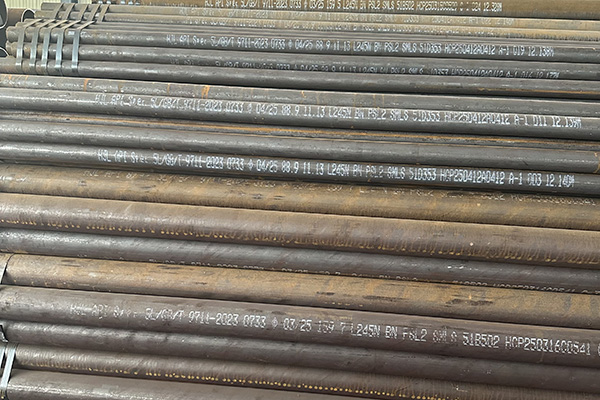

Material Selection Principles of Seamless Steel Pipes for Different Working Conditions
Selecting the appropriate material for seamless steel pipes is critical to ensuring the safety, reliability, and efficiency of piping systems under various working conditions. Different environments and service requirements demand tailored material properties such as strength, corrosion resistance, temperature tolerance, and weldability. The following principles guide the selection process for seamless steel pipes across diverse applications:
Operating Temperature
For high-temperature environments (e.g., power plants, refineries), materials with excellent creep resistance and thermal stability such as alloy steels containing chromium, molybdenum, and vanadium (e.g., ASTM A335 grades P11, P22, P91) are preferred.
For low-temperature applications, materials with good impact toughness and resistance to brittle fracture (such as normalized carbon-manganese steels or certain low-alloy steels) are required.
Operating Pressure
High-pressure pipelines require steels with high tensile and yield strength to withstand internal stresses without deformation or failure. High-strength low-alloy steels and heat-treated grades are commonly used to meet these demands.
For moderate or low-pressure systems, carbon steels with standard mechanical properties may suffice.
Corrosive Environment
In environments exposed to corrosive media like sour gas, chlorides, or acidic fluids, materials with enhanced corrosion resistance (e.g., stainless steels or corrosion-resistant alloy steels with chromium and molybdenum) are necessary.
For less aggressive environments, coated or lined carbon steel pipes may be economically viable.
Hydrogen Service
Pipelines operating in hydrogen-rich atmospheres require materials resistant to hydrogen embrittlement and cracking. Low sulfur and phosphorus contents, along with appropriate heat treatment, improve resistance in these conditions.
Weldability and Fabrication
Seamless steel pipes should possess good weldability, especially for complex pipeline networks. Materials with balanced alloying elements that enable effective welding and post-weld heat treatment are ideal.
Mechanical Loading and Cyclic Stress
For systems subject to dynamic loads, vibration, or frequent pressure changes, materials with high fatigue resistance and fracture toughness reduce the risk of crack initiation and propagation.
Economic Considerations
Material selection must balance performance requirements with cost-effectiveness. Over-specifying materials can lead to unnecessary expenses, while under-specifying risks premature failure.
Compliance with Standards
Selected materials must meet relevant industry standards (such as ASTM, API, ASME, or ISO) that specify chemical composition, mechanical properties, and testing protocols for the intended application.
Conclusion
A thorough understanding of the operating conditions and service requirements is essential for choosing the right seamless steel pipe material. Careful evaluation of temperature, pressure, corrosion potential, mechanical stresses, and economic factors ensures pipeline safety, longevity, and optimal performance.
References:
ASTM A335 – Standard Specification for Seamless Ferritic Alloy-Steel Pipe for High-Temperature Service
API 5L – Specification for Line Pipe
ASME B31.3 – Process Piping Code
NACE MR0175/ISO 15156 – Materials for Use in H2S-Containing Environments in Oil and Gas Production
Shankar, R. (2020). Advanced Materials for Piping Systems. Elsevier.





